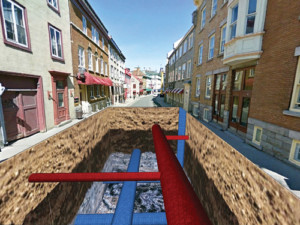ARKit opens a world of opportunities to build breakthrough Augmented Reality (AR) apps, and developers don’t miss the chance to create them. At QUALITANCE we are deeply involved in using emerging technologies. We’re always testing and learning with mixed reality. Here are some key rules to keep in mind when building the next AR app using ARKit. Also, we will show you two brilliant use cases about the possibilities AR unlocks.
The Apple phenomenon
The day iOS 11 launched, three months ago, is a day to remember: it’s the moment Augmented Reality became accessible for over 250 million people owning an iPhone. This means a 20x larger market than total Virtual Reality (VR) headset unit sales worldwide in 2017. Apple will become the biggest AR platform out there for three major reasons:
- It’s the only company having the power to create a new market. It’s the brand everyone wants!
- The company has full power and control on its hardware, and OS dedicated to that hardware.
- They offer easy to use AR to people on a cool device people already know and (maybe) have.
How to create successful apps using ARKit
It’s a gold rush. Apps that use the ARKit framework Apple introduced in iOS 11 have been installed 3 million times around the world since Sept 19th, according to new data shared by analytics Sensor Tower (via TechCrunch). A lot of devs and companies are switching to build apps with ARKit. Here are 3 pieces of advice to create flawless AR applications:
- Solve a real, important problem for users. Before starting to build an AR app, ask yourself: why would the user take out their phone and launch the AR app you built? Using an AR app means an effort to constantly keep the phone in the front of your eyes. And you look a bit like an idiot.
- AR mobile apps don’t let you operate hands-free. Remember that the user has to hold a phone with one hand or – even worse – a tablet with two hands. You can’t make a cooking AR app for phones/tablets because the user can’t cook while holding the phone. You can use Hololens for that kind of apps.
- Create a mix of virtual and real that makes sense in AR. For instance, it’s useless to augment a virtual TV on small phone screens, because this doesn’t add anything to the experience of watching a movie.
If you can’t find a problem worth solving – make it super funny – Pokemon GO kind of funny. There has to be a real need or desire for an AR app, otherwise people won’t use it.
Take a look at what we created in a couple of hours using the ARKit. The CandyLand app gets you into the world of fairy tales and works as a proof of how easy it is to build AR apps. We also discovered it’s a lot of fun!
Unlocking Business Value
You got it – you can do fun stuff with AR, but what serious B2B apps you can build using ARKit, where usefulness outshines the lack of fun and the no-hands-free disadvantage? I’ll show you two amazing business use cases that bring great advantages in AR.
1. Urban Planning & Maintenance Support for City Infrastructure
 GIS companies years ago were using complex software and powerful hardware machine to combine Google Street View data images with ground-penetrating radar data to create a ‘virtual excavation’ and plan excavations. All of these were done sitting in a chair inside an office, and spending days to put all data together.
GIS companies years ago were using complex software and powerful hardware machine to combine Google Street View data images with ground-penetrating radar data to create a ‘virtual excavation’ and plan excavations. All of these were done sitting in a chair inside an office, and spending days to put all data together.
Today we can build an app that can be installed on an iPad, and with the power of Augmented Reality we can see this information on-site, live stream of data on the internet, and make those decisions in minutes.
We will have a new generation of Google Glass and Hololens. AR Glasses will be the next smartphones.
2. In the New Advertising Era, We’re Using ‘Solidgrams’
With the new hardware like 3D sensors, TrueDepth Cameras, and improved software kits, we’ll soon be able to have a new generation of Google Glasses and Hololens. AR Glasses will be the next smartphones.
In the recent movie ‘Ghost in the Shell’, a new concept arises: solidgrams – incredible lifelike holograms displayed prominently as advertisements.

Movie capture from the “Ghost in the Shell” movie
If you reduce those effects to basic, there are location-based 3D animated objects that can be viewed through AR Glasses. An app like this can give you the same experience like in the movie and is a great leap for the advertising market.
Is AR 10X VR?
Augmented Reality has the potential to take over the world. We believe it’s a much bigger opportunity than VR because adoption for consumers and developers is far easier. Join us on the journey of unlocking the potential of Augmented Reality!
Do you have any questions about how to use ARKit to bring your idea to life? Feel free to drop me a line at [email protected] and let’s chat!



No Comments